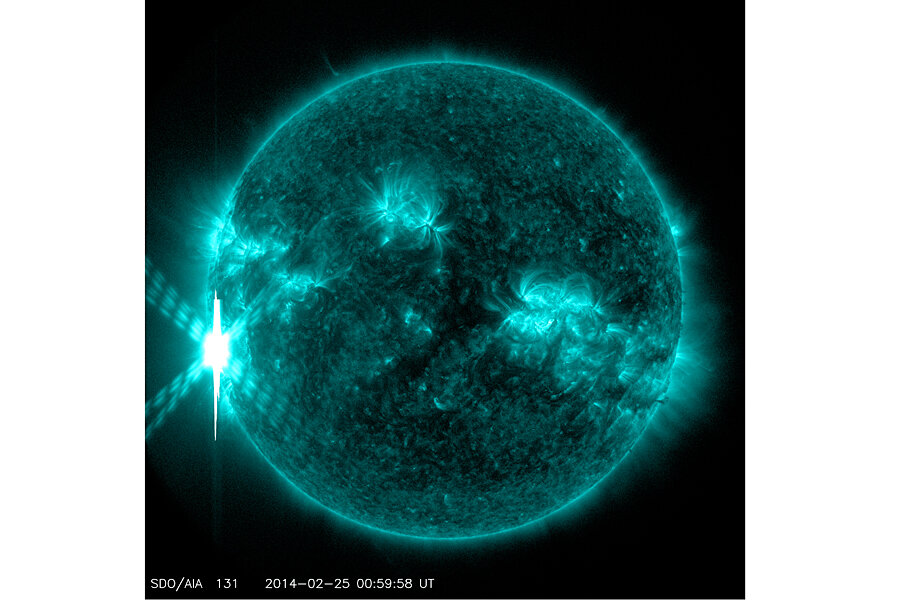Sun spews huge solar flare
Loading...
On Monday, the sun unleashed a powerful solar flare.
Astronomers have classified the sudden burst of energy accompanied with a bright flash of light on the sun's surface under the most intense category of solar flares: X-class.
Specifically, this was an X4.9-class flare, easily making it the most powerful of the year so far. NASA's Solar Dynamics Observatory called the powerful bursts of electromagnetic energy and radiation "significant."
We know that a solar flare eruption occurs when magnetic field lines from deep within the sun rise into the solar atmosphere, break, and then reconnect, releasing tremendous amounts of electromagnetic radiation.
But mysteries remain. "Solar flares are bursts of x-rays and light that stream out into space, but scientists don't yet know the fine details of what sets them off," according to NASA.
Monday's flare was imaged by NASA's Interface Region Imaging Spectrograph (IRIS) satellite. It was the most powerful flare witnessed by IRIS since its June 2013 launch.
To gather data, the IRIS gazes at a particular region of the sun with "unprecedented resolution." The IRIS examines the chromosphere, a layer in the sun's atmosphere just above the surface, that is "key to regulating the flow of energy and material as they travel from the sun's surface out into space."
"Some people worry that a gigantic 'killer solar flare' could hurl enough energy to destroy Earth, but this is not actually possible," said NASA. The heat of the solar flare cannot reach Earth, but the electromagnetic radiation and high-energy particles can definitely reach our planet, causing disruption of satellites, global positioning systems, and electrical power grids.
This particular flare was visible from the Earth, but the substances released by the flare will most likely not reach us, William Dean Pesnell, project scientist for NASA's Solar Dynamics Observatory told the Monitor.
The IRIS observed its last strongest solar flare on January 28 after it spotted a "magnetically active region on the sun." This was an M-class solar fare, second strongest to X-class solar flares.
Another huge solar flare on Jan. 8 prompted commercial spaceflight company Orbital Sciences to reschedule the launch of its private cargo mission.








